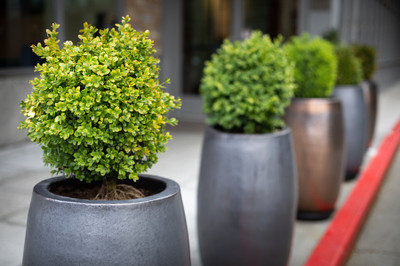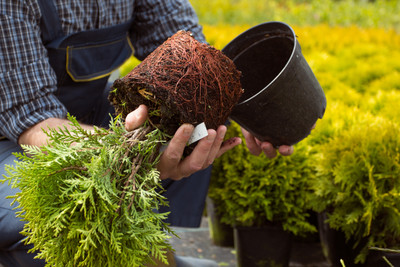How Fiberglass Planters Elevate Guest Experience in Restaurants
Posted by Jason Wyrwicz on May 8th 2025
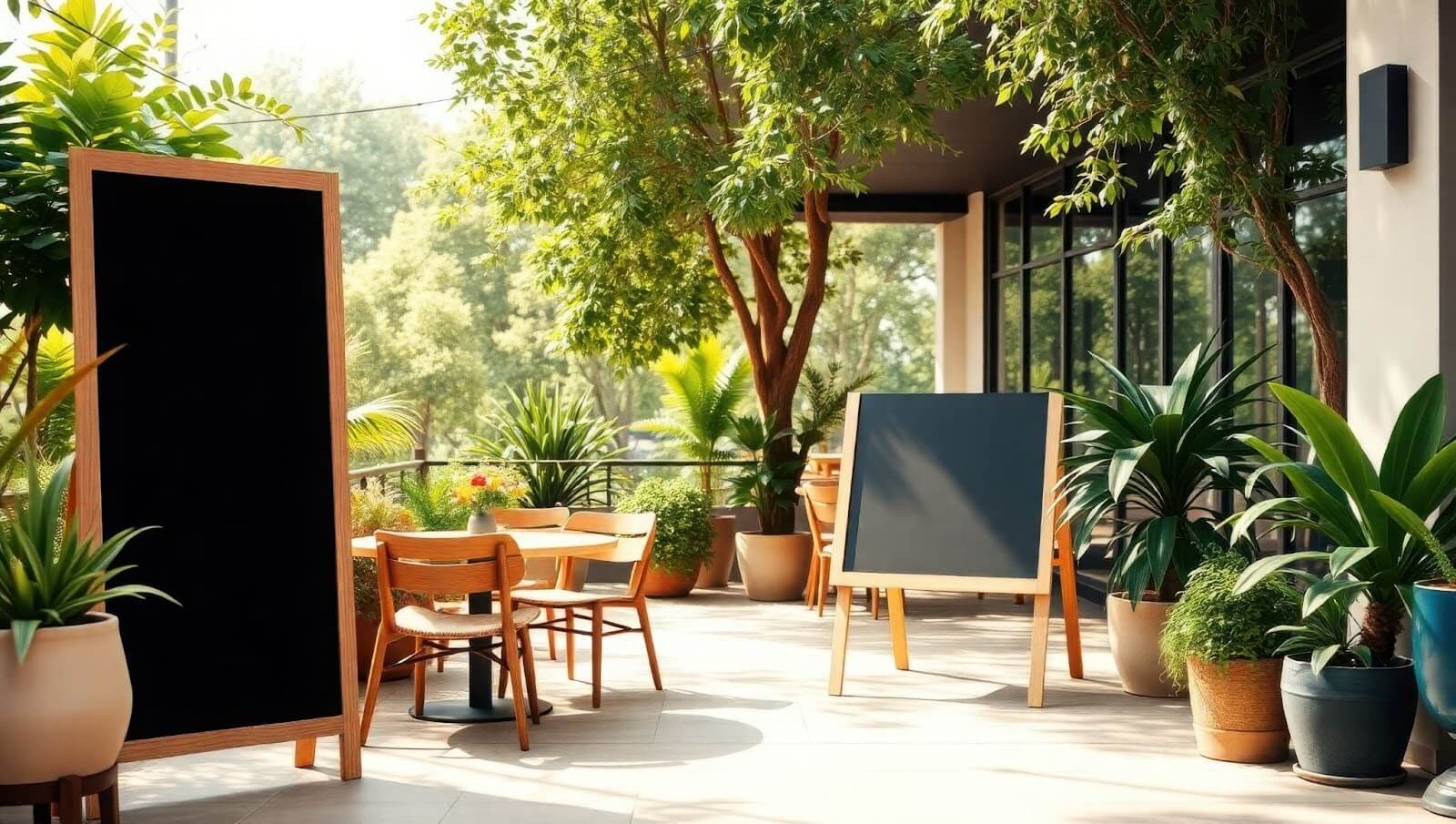
Today’s restaurant-goers crave more than a great meal. Dining out has evolved into a holistic experience. Every detail matters, from lighting to seating arrangements. Patrons often notice how design elements—particularly greenery—can boost the mood or sense of relaxation in a space.
Enter fiberglass planters: a sleek, low-maintenance solution for showcasing plants in a restaurant—whether indoors or out. Because they’re lightweight, durable, and easy to customize, they suit nearly any theme or design scheme.
At a time when guests want a dining space that feels both welcoming and thoughtfully curated, these planters provide an immediate way to incorporate plant life into your décor.
Why Guest Experience Matters in Restaurant Design
Guest experience goes well beyond cuisine. While tasty dishes may bring diners through the door, ambience, comfort, and overall restaurant interior design with plants often determine how they feel during their visit—and whether they’ll return.
Privacy Is Key
Privacy is a key element that’s sometimes overlooked. While a bustling room might create a fun vibe, many diners also appreciate enough personal space to enjoy a calm conversation.
Well-placed planters can help establish semi-private zones without making the environment feel cramped. Combine that with subtle lighting and tasteful décor, and you have a space where diners can truly relax.
Guiding the Foot Traffic
Flow is another vital piece. People notice when they have to squeeze past tables or sidestep corners. By using fiberglass planters to guide foot traffic, owners can create an intuitive layout. Clear pathways reduce congestion around busy spots like the host stand or restrooms.
Studies in the hospitality industry suggest that well-planned layouts and pleasant outdoor seating—complete with restaurant patio plants—often lead to higher guest satisfaction. In a competitive market, these details can significantly boost return visits, positive word-of-mouth, and overall profitability.
What Makes Fiberglass Planters Ideal for Restaurants?
Restaurants need planters that marry style with resilience. Fiberglass excels in several ways:
- Weight and mobility
These planters weigh significantly less than ceramic or concrete, making them easy to move. If a dining room needs a reconfiguration for a private event, staff won’t struggle with heavy containers.
- Weather resistance
Many fiberglass planters are designed to withstand UV rays, frost, and moisture. They won’t crack or fade in direct sun, making them perfect for outdoor restaurant plants exposed to varying conditions.
- Custom finishes
From metallic sheens to matte textures that mimic stone, fiberglass can adopt a range of looks. Restaurateurs can choose colors or coatings that align with their brand, whether they run a minimalist café or a rustic-industrial taproom.
- Low maintenance
The biggest selling point? Fiberglass planters are easy to clean. A quick wipe-down keeps them looking fresh, which is crucial in busy environments where staff have other pressing duties.
Comparison to Concrete or Ceramic
With fiberglass planters, you won’t need to sacrifice style for practicality, making them an appealing option for everything from family diners to upscale steakhouses.
Creating Zones and Flow with Planters
Effective layout depends on differentiating functional areas—like bar seating, dining zones, and waiting lounges—while maintaining a cohesive aesthetic.
Building permanent walls can close off a space, but restaurant interior design with plants allows for subtle partitions.
Green Dividers
Consider a large, open-concept eatery. Placing a row of tall, rectangular planters filled with lush foliage can help form distinct dining sections.
This “green divider” approach provides privacy for each section without making the room feel overcrowded. Patrons still sense the energy of a communal atmosphere but can enjoy conversations without feeling on display.
Flexible Boundaries
Planters on the patio can define the boundary between the dining area and the outside world. Rather than installing metal railings or rope barriers, a row of fiberglass planters with restaurant patio plants—like ornamental grasses or brightly colored flowers—adds visual interest.
This approach clarifies where the seating area begins, beckoning passersby and giving guests the impression they’re enjoying a curated outdoor experience.
Boosting Ambience Through Biophilic Design
Biophilic design aims to reconnect people with nature, making it particularly relevant in urban restaurants where greenery might be scarce.
By weaving natural materials and living plants into the décor, eateries provide a calming respite that elevates the dining experience.
Green for Money
Fiberglass planters bring these natural elements into the mix without requiring extensive renovations.
You might place a few tall planters near the entrance, each holding bamboo or snake plants, to give guests a sense of serenity the moment they walk in. Inside, plants for restaurant booths or table-height planters add a sense of coziness to each seating area.
Some restaurants go a step further, installing a living green wall as a focal point. It’s not just about looks—the presence of greenery can subtly improve a diner’s mood, encouraging them to linger longer and potentially order that extra dessert or cocktail.
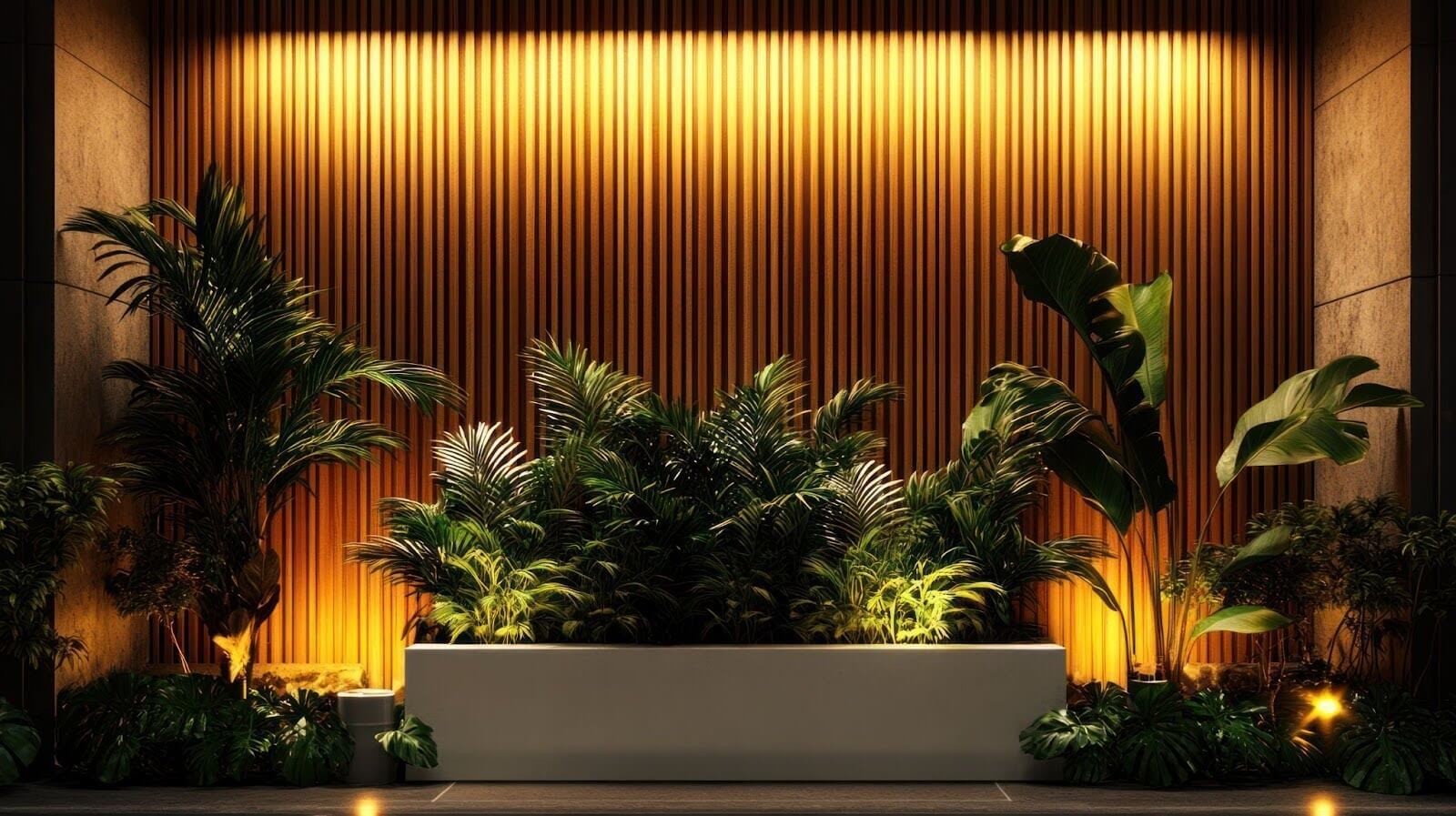
Curb Appeal and First Impressions
The exterior is often a diner’s first glimpse of your brand. A welcoming façade can catch the eye of pedestrians and communicate that you prioritize the overall experience—beyond just the food.
Outdoor restaurant plants in fiberglass planters help cultivate a polished, visually engaging entrance.
Matching the Vibe
Design principles like symmetry and focal points come into play here. You might place matching planters on either side of your doors, each containing a vibrant arrangement that echoes your interior color palette.
Alternatively, a varied cluster of planters in different shapes and sizes might create a more eclectic, bohemian vibe—ideal for a casual café or bar.
Following the Seasons
Seasonality is another bonus. In warmer months, bright blooms can signal the excitement of spring and summer; when temperatures drop, switch to evergreens or ornamental grasses to maintain texture and visual interest.
Because fiberglass can withstand frost and harsh weather, you won’t have to worry about outdoor restaurant plants looking worn. Even in challenging climates, these planters retain their luster and ensure your restaurant always makes a strong first impression.
Low Maintenance and ROI for Owners & Managers
Investing in a design upgrade like fiberglass planters must also make sense from a business standpoint. Busy owners and managers juggle myriad tasks, from staff scheduling to menu decisions, so adding plant care to the list can feel daunting.
That’s why the low-maintenance aspect of fiberglass is a major draw: it resists cracks, chips, and discoloration.
If someone bumps into a planter or if it’s exposed to direct sunlight all day, it still holds up. This reliability reduces the need for frequent replacements or costly repairs.
High Efficiency
Less maintenance also translates to more efficient staff operations. Employees can spend less time dealing with cumbersome containers or cleaning up broken shards and more time focusing on service.
Whether it’s wiping down a planter or rearranging the layout for a private event, fiberglass’s lightweight and durability simplify the process.
Brand Ambassador
From an ROI perspective, attractive décor can encourage repeat visits. Diners often mention a restaurant’s “look and feel” in reviews, so décor that remains pristine for years can become a silent yet powerful brand ambassador.
If your establishment is known for its welcoming atmosphere—enriched by the benefits of plants in a restaurant—people may be more likely to recommend it to friends and family.
Over time, that means fiberglass planters can help you retain both a high aesthetic standard and loyal clientele.
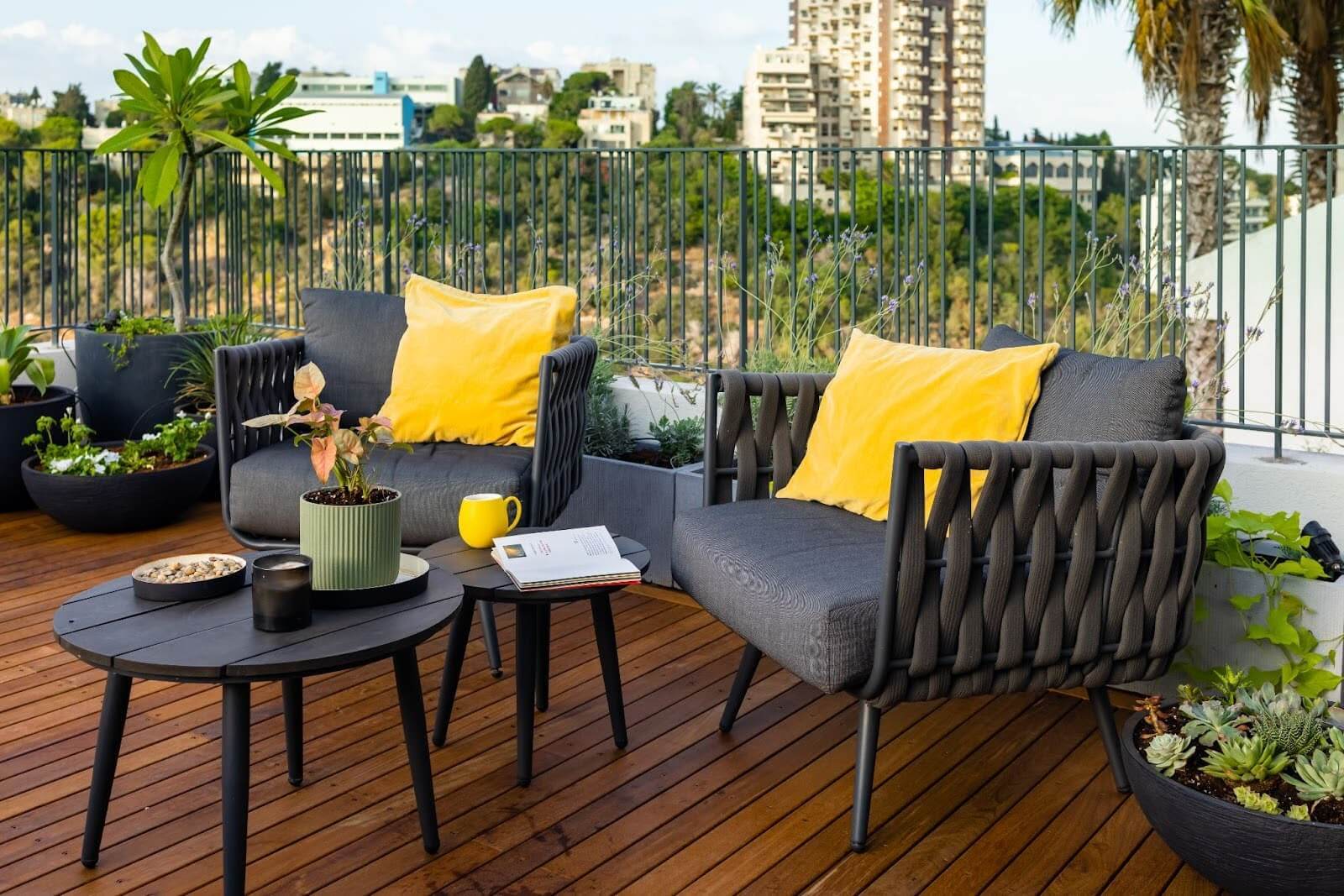
Design Versatility for Every Concept
Fiberglass planters adapt to an impressive range of unique restaurant designs with plants. Here are a few scenarios:
- Modern upscale
Opt for tall, slender planters in monochromatic tones, like matte black or glossy white. Fill them with architectural plants (like sansevieria) to complement minimalist or industrial décor.
- Coastal or tropical
Use planters finished in lighter hues or sandy textures. Combine them with palm trees, succulents, or flowering varieties to evoke beachy vibes—ideal for open-air terraces.
- Rustic industrial
Matte or metallic finishes can echo exposed brick and reclaimed wood. Hardy plants such as spider plants or philodendrons mesh nicely with the warm, rough-edged setting.
- Eclectic bistro
A mishmash of shapes and colors can create a whimsical atmosphere. Mix round and rectangular planters, each housing different plant species that reflect the restaurant’s cheerful, free-spirited theme.
Because fiberglass can be molded into almost any shape, the design possibilities are vast. Rectangular planters can act as partitions, while wide, bowl-shaped containers become focal points.
With so many configurations, you can continually refresh your look. Some owners switch out plant varieties seasonally or align color palettes with new menu themes. This level of versatility means you won’t be stuck with a single “look” for years on end.
Tips for Choosing the Right Planters
Choosing the right plants for restaurant spaces involves more than picking a container you like. Here are some practical guidelines:
Assess dimensions
A planter too large for a narrow aisle can create traffic jams, while one that’s too small for a wide patio might feel insignificant. Measure your available space carefully.
Match plants to lighting
If your interior is dimly lit, consider shade-tolerant options like pothos or peace lilies. For sun-drenched patios, heartier species such as succulents or palms may thrive better. Proper outdoor restaurant plants can handle fluctuating weather.
Drainage details
Many fiberglass planters offer built-in drainage systems. If yours don’t, be mindful of how water accumulates to prevent over-saturation or root rot. Indoors, you might need saucers or liners to catch any runoff.
At Pots Planters & More you can order planters with or without drainage holes for your full convenience
Color strategy
Planters can blend seamlessly with existing décor or act as eye-catching statement pieces.
For a cohesive look, pick hues that complement wall colors or furniture. If you want contrast, opt for bold shades that pop against a neutral backdrop.
Plan for maintenance
Even though plants need regular watering, pruning, or the occasional fertilizer. Make sure staff or a plant-care service can keep the greenery healthy, so it continues to beautify the space.
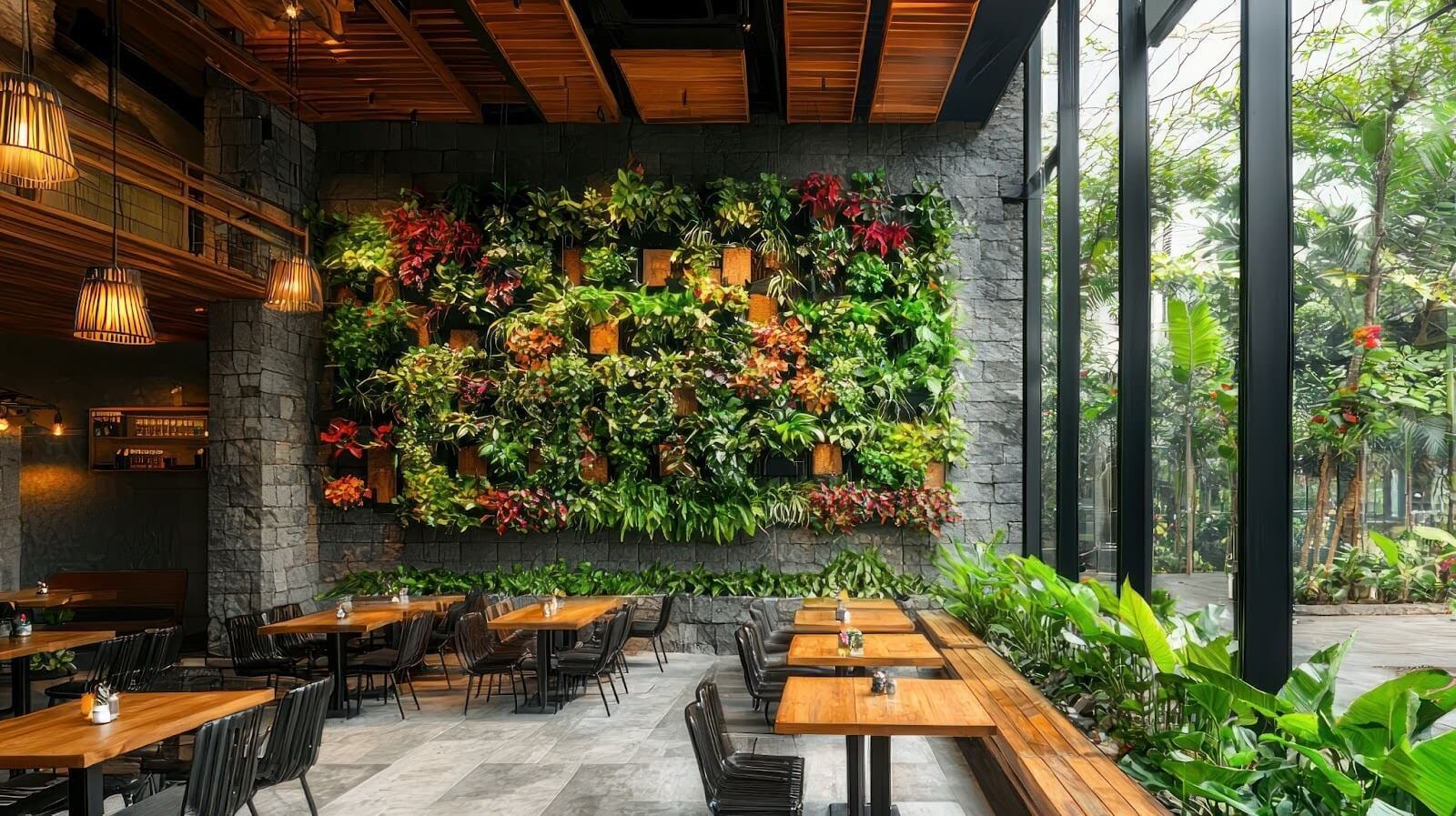
Conclusion: A Small Change with a Big Impact
Fiberglass planters might seem like a modest addition, but they can positively influence guest experience in your restaurant. They offer a simple avenue for introducing greenery—whether tall ornamental grasses framing an entryway, compact succulent gardens on tabletops, or statement trees in a bright corner.
Pair these planters with strategic layout decisions—like zoning and biophilic design—and you’ll see even greater benefits.




